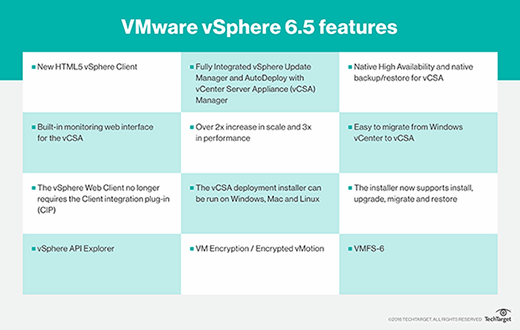

- Vmware vsphere mac client how to#
- Vmware vsphere mac client mac os x#
- Vmware vsphere mac client mac os#
- Vmware vsphere mac client full#
You must enable your SSH-server on the ESXi-server before you can do this.

You can also perform some management tasks from an SSH-connection to your host. It also has the vSphere Client to allow you to manage the ESXi-host. In the image below you see a VM running Windows. If it's already running you can connect directly to the virtual machine. If the VM is not powered on and you open a console to the VM it will be powered on. Once you are logged in you will see a list of available virtual machine. You can provide the host's IP-address with the -h parameter but if you leave it out you can enter it with the user credentials. This will open a VMware Player window and requests login to the host. With VMware Player installed you can run it from the command line and connect to an ESXi-host:
Vmware vsphere mac client mac os#
This tool is available as a download for Windows and Linux ( and it's included with Mac OS X. Once your ESXi-host is up and running and you have multiple virtual machines running and maybe also vCenter deployed as a virtual appliance then you can access the console of those virtual machines with VMware Player.
Vmware vsphere mac client mac os x#
Access your VM-console from Linux or Mac OS X with a VMware Player-console But from time to time there are Windows-based applications for which there really is no alternative and for those cases I have a Windows VM on my laptop. I personally run openSUSE and work with Linux for the largest part of the day.

Vmware vsphere mac client full#
To work with the full vSphere Client on Windows you can run it in a Windows virtual machine or from a physical Windows computer to configure the ESXi-host and create virtual machines. Run a Windows VM in Player, Workstation or Fusion
Vmware vsphere mac client how to#
How to do this is explained in this article. It is also possible to import the appliance from the command line with VMware's OVF Tool, which is available for Linux and Windows. But you would always need the vSphere Client on Windows at least once after installation of ESXi to for example import the vCenter Virtual Appliance ( explained here) Or to create a virtual machine. There are a few tools that you can use to make administration for your environment simpler. So what do you do when your vCenter server is down or what to do if you only have one ESXi server? The only problem with that is that it only works with vCenter. And you can access that from your Linux system and Mac OS X. The longer answer is: do you need one? And is there an alternative? For most day to day operations you should move to the vSphere Web Client. You perform many management tasks from the Inventory view, which consists of a single window containing a menu bar, a navigation bar, a toolbar, a status bar, a panel section, and pop-up menus.If you are using a Linux-based pc or Mac OS X and want to manage a vSphere-environment then you might ask yourself the question if there is a native OS-version of the vSphere Client available for your platform. When you log out of the vSphere Client, the client application retains the view that was displayed when it closed, and returns you to that view when you next log in. When you first log in to the vSphere Client, it displays a Home page with icons that you select to access vSphere Client functions. When the server is an ESXi host, the vSphere Client displays only the options appropriate to single host management. When the server is a vCenter Server system, the vSphere Client displays all the options available to the vSphere environment, according to the licensing configuration and the user permissions. The vSphere Client user interface is configured based on the server to which it is connected: #The vSphere Client is the principal interface for administering vCenter Server and ESXi.


 0 kommentar(er)
0 kommentar(er)
